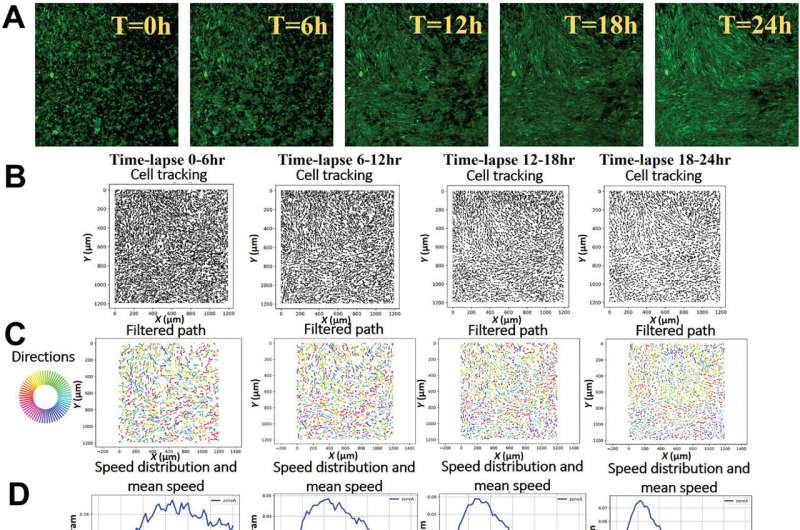This article has been reviewed according to Science X's editorial process and policies. Editors have highlighted the following attributes while ensuring the content's credibility:
fact-checked
peer-reviewed publication
trusted source
proofread
New model of key brain tumor feature could help scientists develop novel treatments

Researchers at the University of Michigan Health Rogel Cancer Center are exploiting a unique biological feature of glioblastoma to gain a better understanding of how this puzzling brain cancer develops and how to target new treatments against it.
The team, led by senior author Pedro Lowenstein, M.D., Ph.D., Richard Schneider Collegiate Professor of Neurosurgery at Michigan Medicine, had previously identified oncostreams as a key feature in glioblastoma development and in more aggressive disease. These highly active, elongated, spindle-like cells move throughout tissue in complicated patterns. The accumulation of oncostreams found throughout a tumor serve as the basis for cancerous cells' behavior, determining how tumors grow and invade normal tissue.
In this new study, published in Advanced Science, the team developed human and mouse models of glioblastoma oncostreams and examined multiple factors in the tumor microenvironment that could impact how oncostreams develop and how to reverse them.
Utilizing this model, they also identified a potential inhibitor, DDR1-IN-1, which appears to dismantle oncostreams. Preliminary studies in a mouse model of glioma showed the DDR1 inhibitor led to better survival. This suggests a potential pathway for additional research.
Glioblastoma is an aggressive cancer, with only a 5% survival rate beyond two years. In large part, it's because even when surgery is possible, it's often difficult to remove all the cancerous cells. Radiation and chemotherapy have limited effectiveness, and no other treatment options have been developed in decades.
This work will hopefully lead to new clinical trials, like the phase I trial of dual vector gene therapy, supported in part by the Rogel Cancer Center, which was published recently in The Lancet Oncology.
"This model has deepened our understanding of how glioblastoma cells grow and invade and has led to the identification of a potential new therapeutic target," said Syed M. Faisal, Ph.D., a postdoctoral fellow in Lowenstein's lab and the first author of the study.
"Understanding the mechanism of how glioblastoma grows and migrates is essential to developing new and better treatments," Lowenstein said. "Our oncostream model will be a valuable tool for gaining new insights into how glioma invades. It will allow us to test potential new therapeutic strategies that undermine the cellular and molecular foundations of glioblastoma malignancy."
More information: Syed M. Faisal et al, Spatiotemporal Insights into Glioma Oncostream Dynamics: Unraveling Formation, Stability, and Disassembly Pathways, Advanced Science (2024). DOI: 10.1002/advs.202309796




















